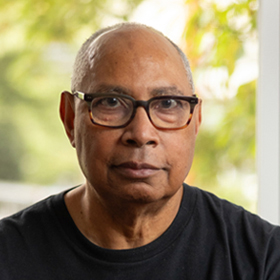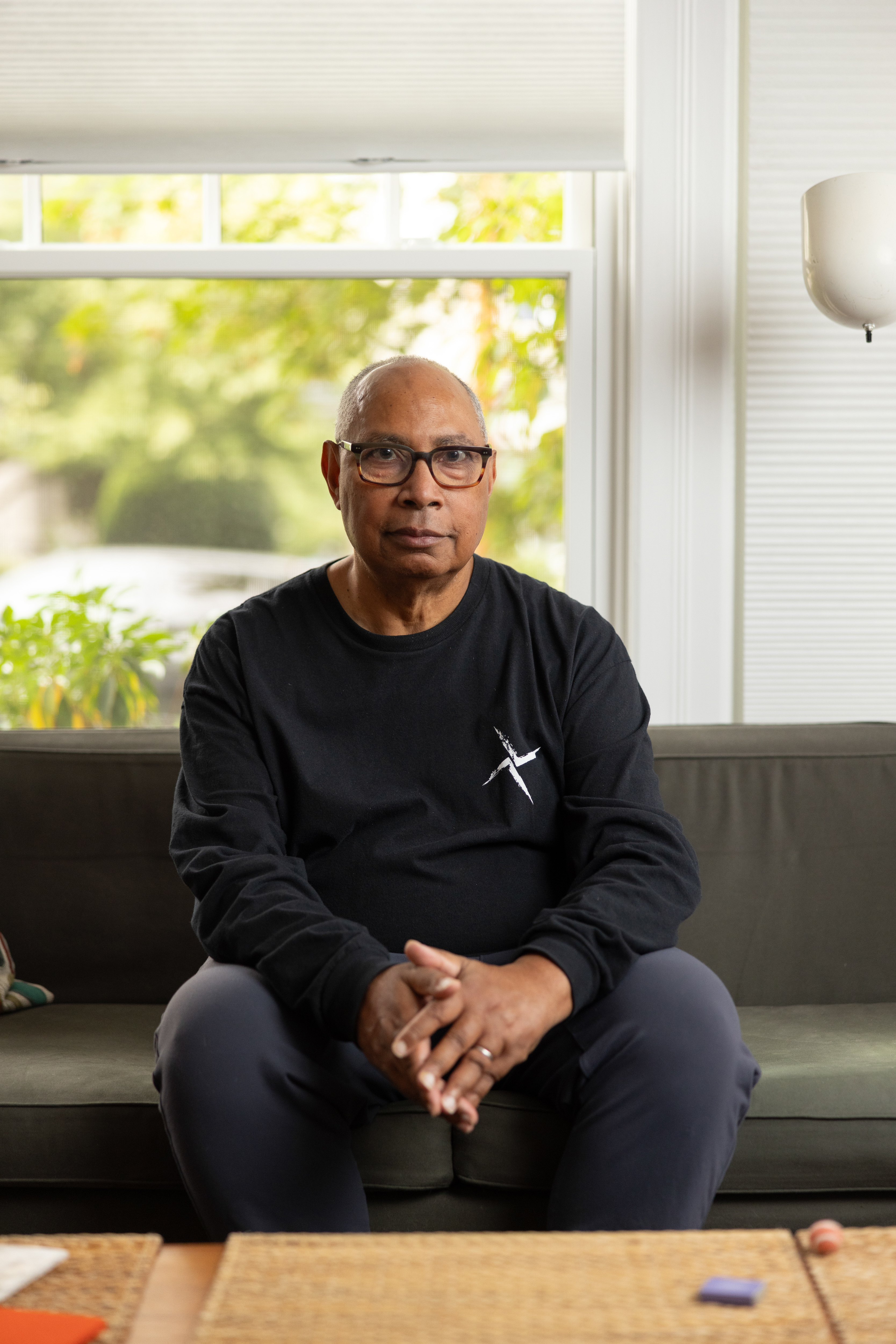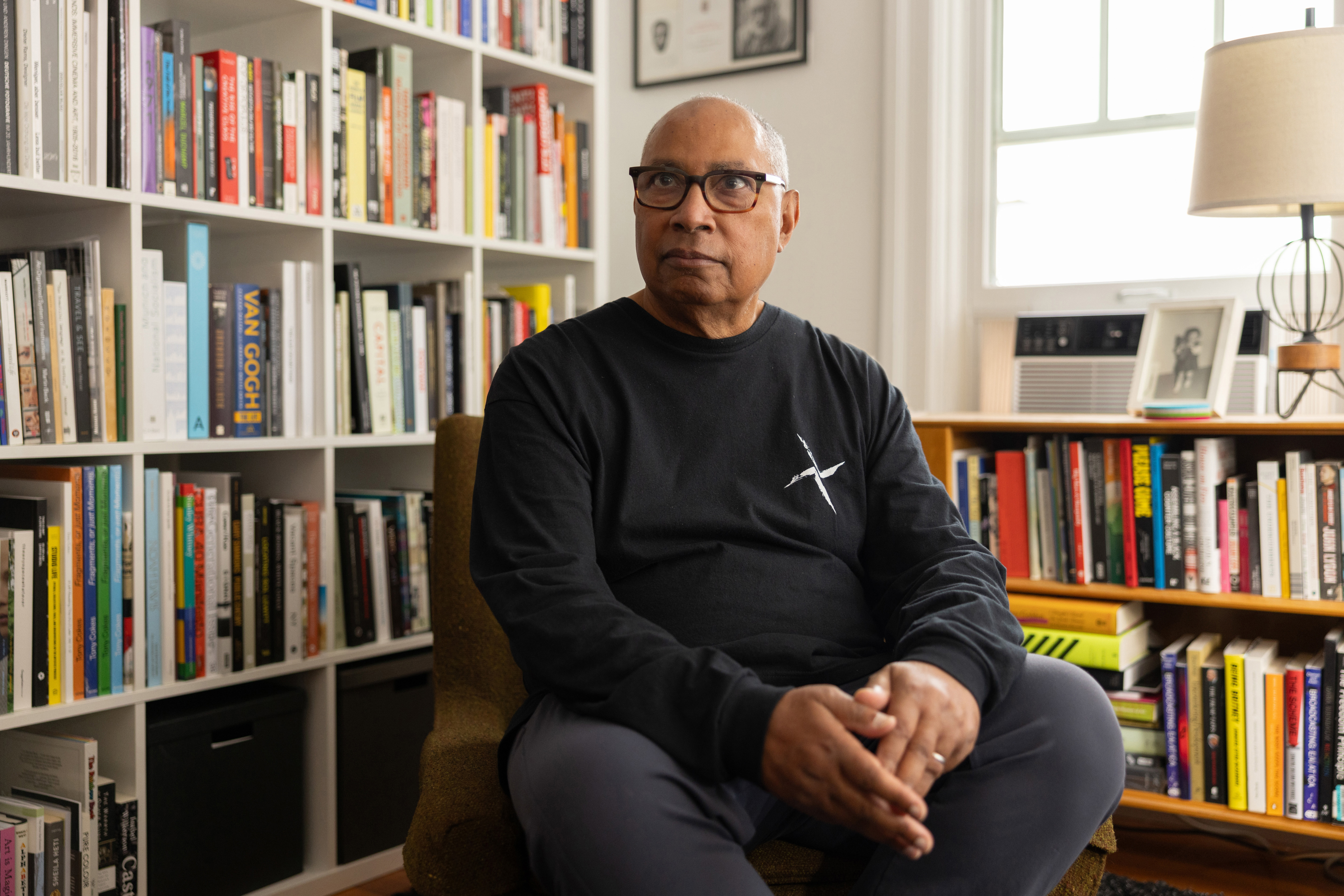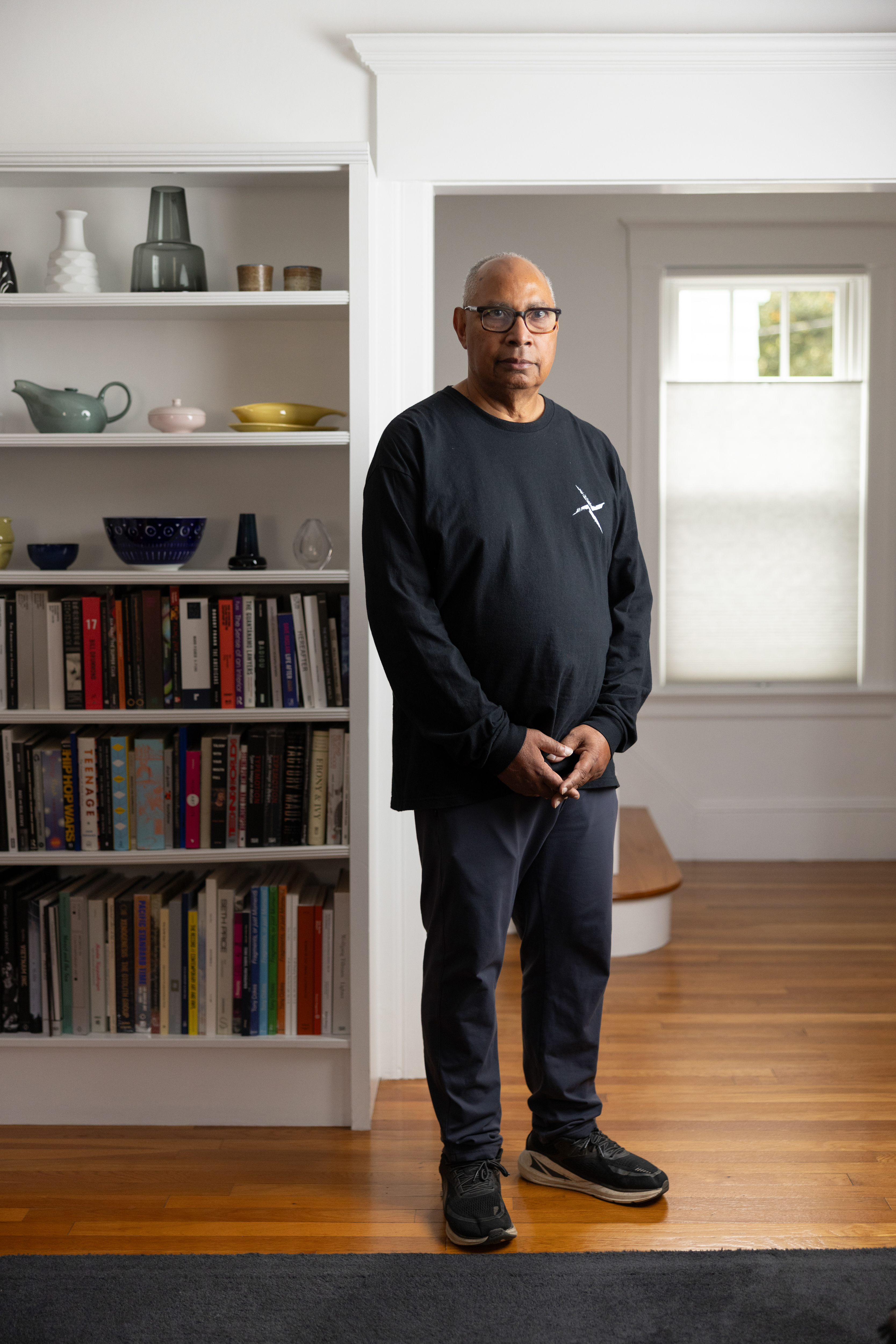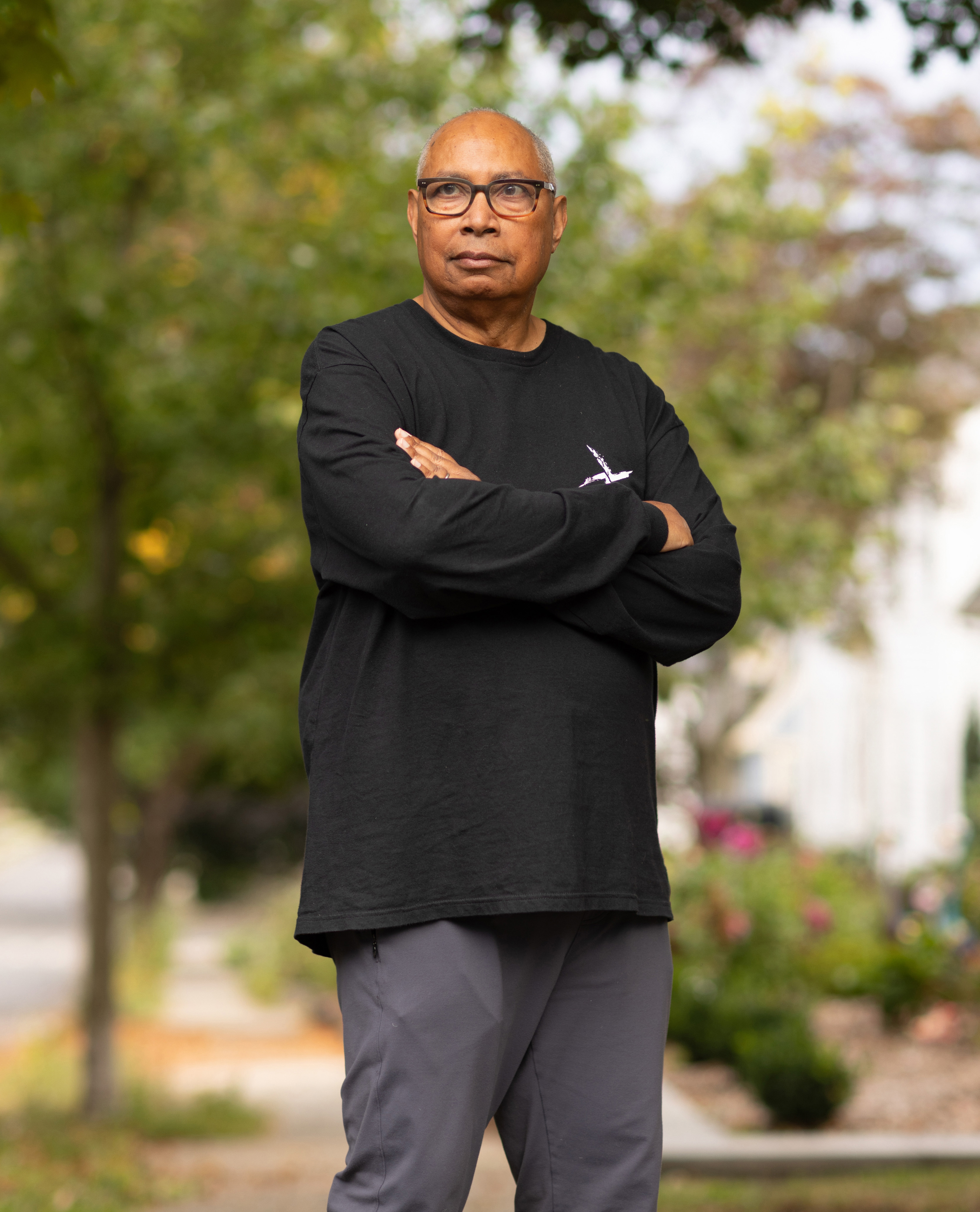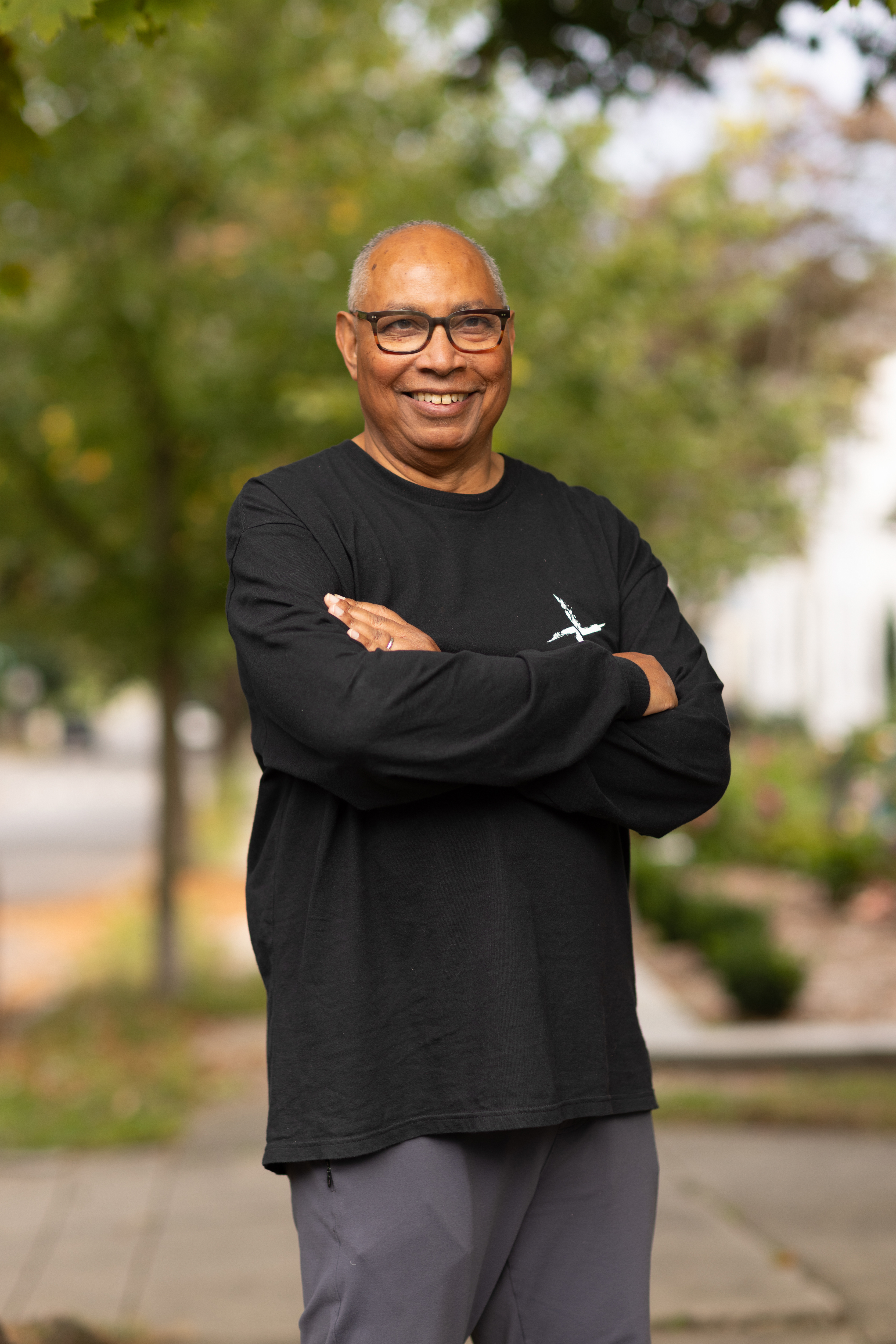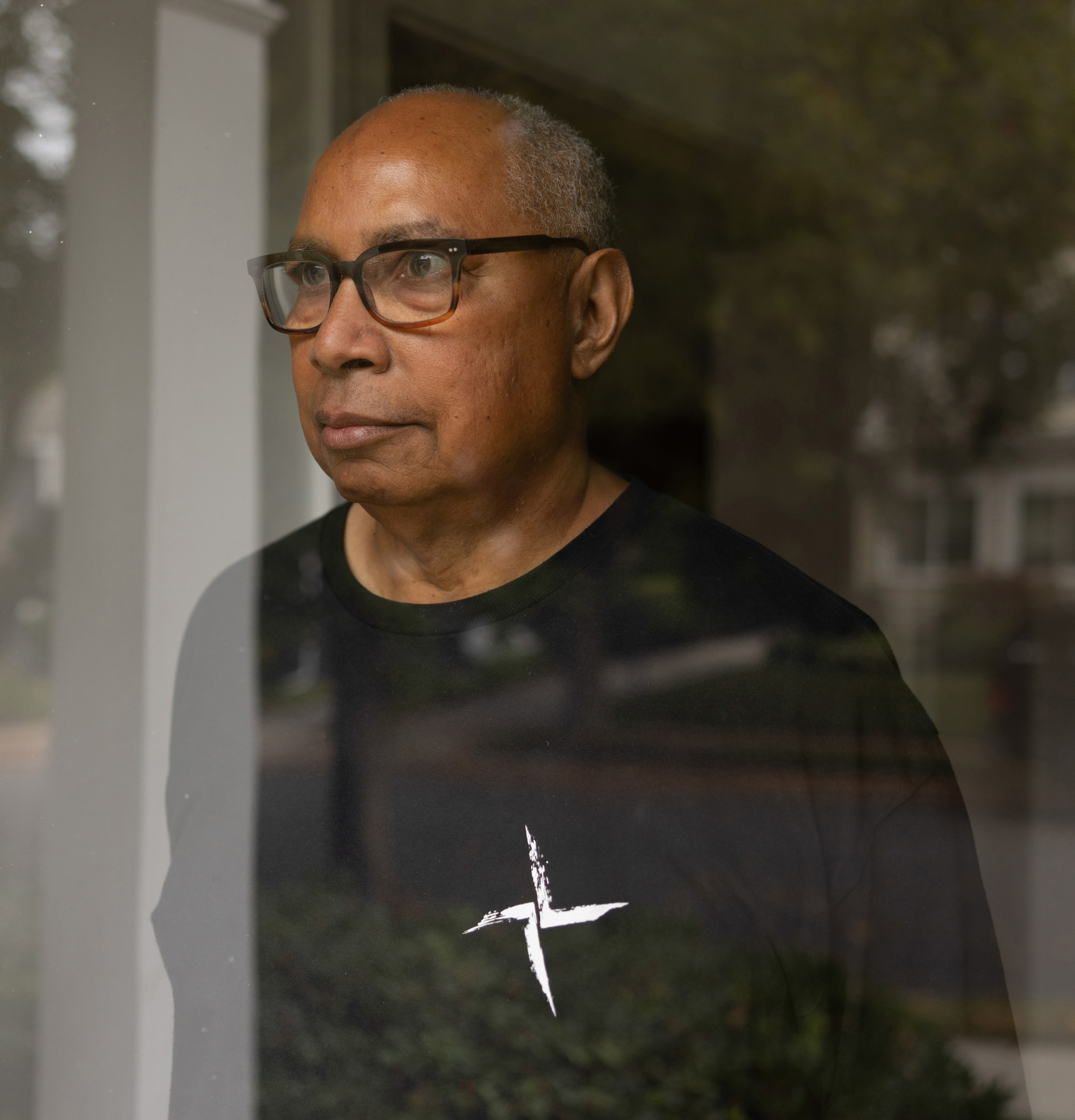About Tony's Work
Tony Cokes is a media artist creating video works that recontextualize historical and cultural moments. Cokes’s signature style is deceptively simple: changing frames of text against backgrounds of solid bright colors or images, accompanied by musical soundtracks. Like a DJ, he samples and recombines textual, musical, and visual fragments. His source materials include found film footage, pop music, journalism, philosophy texts, and social media. The unexpected juxtapositions in his works highlight the ways in which dominant narratives emerging from our oversaturated media environments reinforce existing power structures.
In his early video piece Black Celebration (A Rebellion Against the Commodity) (1988), Cokes reconsiders the uprisings that took place in Black neighborhoods in Los Angeles, Detroit, Newark, and Boston in the 1960s. He combines documentary footage of the upheavals with samples of texts by the cultural theorist Guy Debord, the artist Barbara Kruger, and the musicians Morrisey and Martin Gore (of Depeche Mode). Music from industrial rock band Skinny Puppy accompanies the imagery. In this new context, the scenes of unrest take on new possibilities of meaning: the so-called race riots are recast as the frustrated responses of communities that endure poverty perpetuated by structural racism. In his later and ongoing “Evil” series, Cokes responds to the rhetoric of the Bush administration’s “War on Terror.” Evil.16 (Torture.Musik) (2009–11) features snippets of text from a 2005 article on advanced torture techniques. The text flashes on screens to the rhythm of songs that were used by U.S. troops as a form of torture. The soundtrack includes Metallica’s “Enter Sandman” and Britney Spears’s “… Baby One More Time,” songs known to have been played to detainees at deafening decibel levels and on repeated loops. The dissonance between the instantly recognizable, frivolous music and horrifying accounts of torture underscores the ideological tensions within contemporary pop culture.
More recently, in a 2020 work entitled HS LST WRDS, Cokes uses his pared-down aesthetic to examine the current discourse on police violence against Black and Brown individuals. The piece is constructed around the final words of Elijah McClain, who was killed in the custody of Colorado police. Cokes transcribes McClain’s last utterances without vowels and sets them against a monochromatic ground. As in many of Cokes’s works, the text is more than language conveying information and becomes a visualization of terrifying breathlessness. Through his unique melding of artistic practice and media analysis, Cokes shows the discordant ways media color our understanding and demonstrates the artist’s power to bring clarity and nuance to how we see events, people, and histories.







